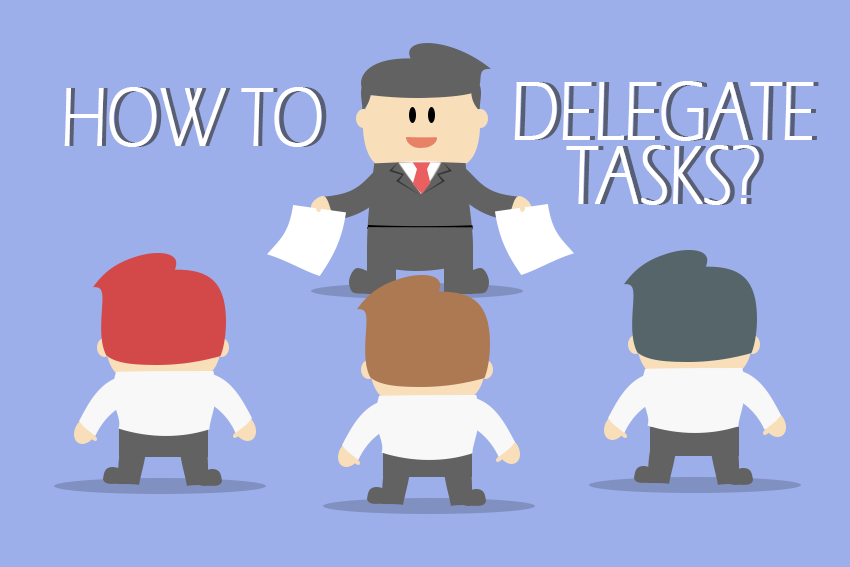Have you ever wondered how entrepreneurs like Elon Musk come up with those incredible ideas and put them into fruition?
It boils down to good delegation!
When was the last time you’ve read about someone who proudly declared “I owe all this success to myself”? Not too often, right?
The process of delegation can be a tricky undertaking. It can help catapult your business for a short period of time. Or it can potentially put your entire venture in jeopardy.
This is where entrepreneurs like you often find themselves in a tight spot.
While you may have done a great job in building your enterprise by yourself during the first few phases, a rapidly growing business requires an extra pair of hands (and minds!). As you move beyond the startup phase, you will eventually need skill sets beyond yours.
Suddenly, you must hire the right people, build a solid team, and learn how to delegate.
In this blog post, you will learn the following:
- Why delegation is one of the key elements of business growth
- Characteristics of effective delegation
- Concrete steps to delegating successfully
Why Delegation is an Essential Skill for Entrepreneurs
If you’ve been thinking about expanding your business or startup even without your constant presence, honing your delegation skills is a must. However, handing off tasks to someone else may be an uphill battle for many. A 2013 executive coaching survey by Stanford Graduate School of Business confirms this struggle.
The findings of the survey revealed two things:
- 35 percent of chief executives surveyed say delegating is something that they need to improve
- 37 percent said they’re trying to improve these skills
These business leaders who are thinking about improving their delegation skills are onto something. They understood that delegation has a huge impact on business growth and expansion.
Such awareness is supported by a 2014 survey by Gallup who studied the entrepreneurial talent profiles and skills of 143 CEOs in the Inc. 500 list for that year.
Below is an except of the survey’s findings describing how CEOs with excellent delegation insights outsmarted their counterparts who have mediocre delegation skills.
Of the 143 Inc. 500 CEOs Gallup surveyed, those with high Delegator talent posted an average three-year growth rate of 1,751% — 112 percentage points greater than those CEOs with limited or low Delegator talent.
CEOs with high Delegator talent also generated 33% greater revenue in 2013 than those with low or limited levels of the talent: $8 million versus $6 million, respectively.
Greater growth and higher revenues also enabled these entrepreneurs to create more jobs at a faster rate. Companies led by those with high Delegator talent, on average, created 21 jobs in three years, compared with 17 new jobs in three years for those with lower levels of Delegator talent.
Deconstructing Effective Delegation
For delegation to truly help you accomplish your business goals rather than constantly put you on edge that it might not work (because it’s way better if you do the tasks yourself!), you have to understand the following attributes of effective delegation:
-
- Effective delegation means building a standardized process or framework within your organization. Say you want to hire a content writer or blogger to help out with your content marketing plans. Instead of constantly checking the writer’s work if it fits your brand’s style and tone of voice, build a style guide instead. Every time you have a new member on board your content team, orient these members to your style guide during the onboarding process.
-
- Effective delegation means understanding each team member’s strengths and weaknesses. By doing so, you’d be able to hand in assignments appropriately. You do not want to ask someone from the creative department to do customer support recruitment.
-
- Effective delegation focuses on outcomes rather than the process. Instead of saying “I want you to create a survey for our customers on Google Form”, why not instruct one of your team members to figure out a way to seek feedback from your customers on a specific product. Who knows if that team member has other creative and effective ideas to seek feedback?
-
- Effective delegation means you’re willing to mentor for the first few days or weeks (if it involves a complex task).
-
- Effective delegation means trusting and empowering your employees to make decisions themselves. This helps promote ownership of the task and consequently encourage an employee to help solve problems rather than just become another cog or mindless drone within your organization.
Meanwhile, delegation that’s filled with doubts and fear of losing control won’t help expand your business at all.
10 Steps to Delegating Like a Pro

Now that you’re already aware on what sets effective delegation apart from delegation that barely works, here are 10 concrete steps to delegating like a pro:
1. Reflect on your tasks and identify what needs to be delegated. Of course, you can’t delegate everything. Find out which tasks can be easily done by one of your team members. Divide these tasks further by tasks that don’t need training and tasks that require mentoring. Also, assess which team members will excel the most when given the chance to perform tasks independently.
2. Provide training to employees or team members that will perform tasks that require mentoring. Plan for these sessions. How long will it take for them to learn a new tool or process? Is your team fully-equipped with these tools? Should you do the teaching yourself or hire a third-party provider do workshops, seminars, etc?
3. Set clear expectations on what needs to be done. Once your team members are armed with the knowledge of processes and tools, communicate what you expect from them. It’s also best to map out the bigger picture (say quarterly business goals) and convey how each delegated task fits within this main objective.
4. Explain to each member why you chose to delegate a specific task to them. This will help promote ownership and pride.
5. Be explicit on milestones and deadlines. Vague timelines and outcomes will eventually haunt you back through missed deadlines or unperformed tasks.
6. Learn to let go and avoid micromanaging. Since you’ve already provided the appropriate tools and mentoring, it’s high time that you back away from the project and give your employees the freedom to do it their way. You can regularly check in for progress on the agreed project milestones.
7. Make yourself accessible. Inform your employees that they can get in touch with you within a specific medium (email, IM, phone) and hours for questions, clarifications, challenges etc.
8. Review the completed tasks with your employee. Be specific with your feedback (both positive and negative) and make sure that your feedback is congruent to the expectations you set out earlier.
You do not want to berate a website designer (whom you delegated the task to create a landing page design) for failing to increase your website traffic. While your landing page can have a direct bearing on your traffic, it is not entirely the designer’s fault. Unless you instructed the designer to apply growth-hacking techniques while designing the page.
9. Give credit where credit’s due and thank members who have made significant contributions.
10. Learn from your mistakes and work on improving the delegation process. This is where documenting the entire process will come in handy. Documentation allows you to reflect back on what went wrong and who did what.
Over To You
Are you still in limbo about delegating tasks?
If you are, we encourage you to take the aforementioned steps to heart and see where it takes your business! Like everything else, delegation may be a tough decision to make but bolder risks come with sweeter rewards.








